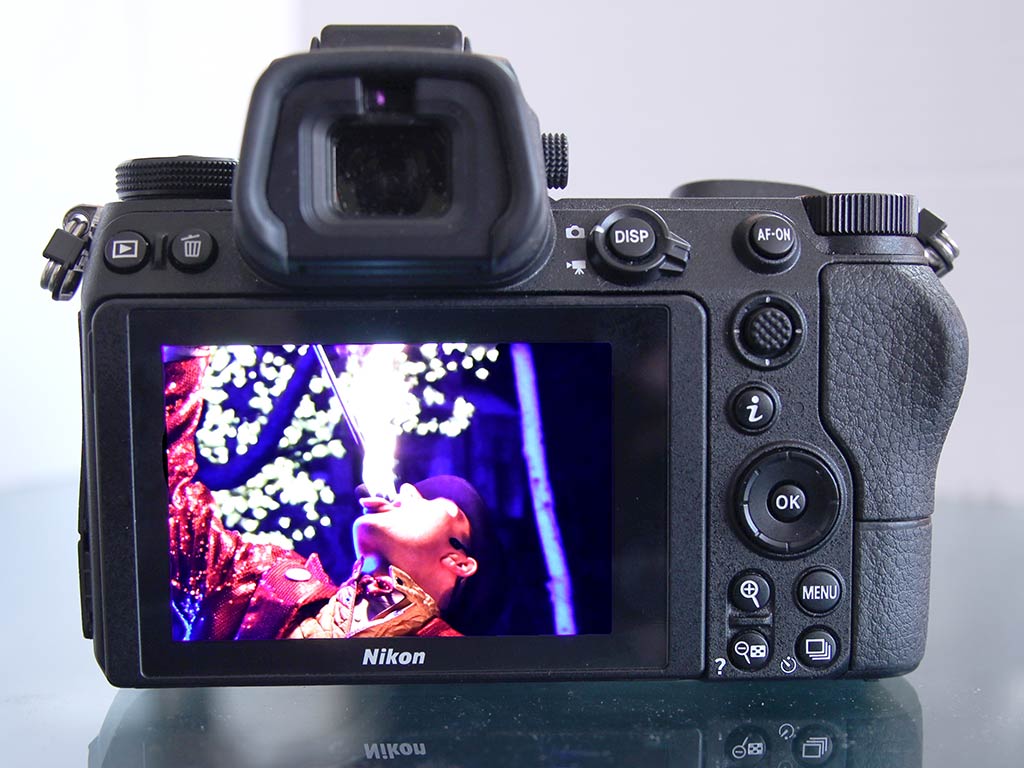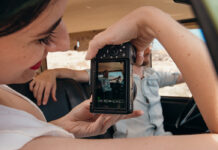
Nikon’s debut into mirrorless full-frame photography shows a lot of promise with the Z7, though its full potential may take more time to realize.
Nikon launched the Z6 and Z7 cameras to some hype—at least in photography circles—because it was a clear indication the company was going to take high-end mirrorless cameras seriously. The Z7 is the better of the duo, though the spec differences aren’t huge between them. It has a 45.7-megapixel image sensor compared to the Z6’s 24.5-megapixel sensor, which benefits the latter for low-light and night shooting.
However, the Z7 is sort of a mirrorless version of the Nikon D850, one of the most effective and popular DSLRs. I’ve never had the opportunity to shoot with it, so I can’t make direct comparisons between them. Still, past experience with Nikon’s DSLRs and smaller mirrorless cameras helped me assess how solid an entry this camera really is.
Design and lens system
Going mirrorless means using an electronic viewfinder instead of an optical one. Saving that space and weight makes the Z7 smaller and lighter than your average Nikon DSLR. I don’t often gush over product design that much, but I loved how the Z7 felt in hand. Sturdy, rugged, yet sophisticated, it was very easy to shoot with. The ergonomics made a lot of sense.
Despite not being a DSLR, the Z7 didn’t feel all that different. Smaller and lighter, yes, but even the electronic viewfinder was reasonably close to an optical one. Maybe I’m a little old school in how I shoot, but I liked that I could use the directional pad or joystick to change the focal point while peering through it. There was also the option of doing it by just tapping on the LCD, though I rarely shot that way.
Aside from preference, a key reason why is because the layout just felt so natural. I could switch certain settings, like ISO, burst, metering and several other metrics with quick button maneuvers. Nikon users will feel at home with this, though I would go as far as saying newcomers will get acclimated pretty quickly, too.
The initial caveat to this new mirrorless system is that Nikon is lagging on the lenses. As of this review, there are three to choose from: the Nikkor Z 35mm f/1.8 S, Nikkor Z 50mm f/1.8 S and Nikkor Z 24-70mm f/4 S. I was only able to test the Z7 with the latter, which is the kit lens the camera comes with.
The new Z-mount system looks to be promising, courtesy of a shorter 16mm flange distance. That means Nikon can develop lenses with really open apertures. The only issue is that the ring’s diameter is larger than the company’s long-standing F-mount system. Without Nikon’s FTZ adapter, F lenses won’t work on the Z7 or Z6. If you want to go that route, note that you have about 90 lenses to work with, many of which have full AF/AE (auto-focus, auto-exposure) control.

Preparing to shoot
Nikon wisely put image stabilization, or “vibration reduction” (VR) as it calls it, into the Z7’s body, rather than in each individual lens. That means it can apply to any lens you mount onto it, but even better, it serves further benefits when it comes to reducing hand shake in any shooting scenario.
I do wish, however, that the company found a way to put in two memory card slots. There’s only one, and it only takes XQD cards, a format separate from SD. If you’ve never used or even heard of XQD, shooting with the Z7 will require you pick up one of these cards.
While not waterproof, the Z7 isn’t a slouch with the elements. Nikon says it has the same weather-proofing the D850 has, so cold, hot, rainy or snowy conditions won’t hinder it too much. Just don’t drop it in the water or take it for a swim.
The usual shooting modes are available. I personally like shutter priority, aperture priority and full manual, but there’s more. The Auto mode is great for anyone getting their feet wet, plus three user bank spots for customized preset settings. Here, the U1, U2 and U3 spots are ideal if you have something specific you tend to go back to. I also think it might be wise to create a basic one if you end up sharing the camera with a more novice shooter. That way, you can protect your own settings, too.

Photo quality
Nikon manages 493 auto-focus points (it’s 273 for the Z6), and features a phase detection full-frame CMOS FX image sensor and EXPEED 6 image processor on the Z7. Shooting in RAW and JPEG is great, but there are a couple of limitations to point out.
First, I found it difficult to track subjects moving quickly and keep them in focus when shooting. I could lock on using the joystick or by tapping on the screen, except variances in distance and speed could confuse the camera.
Second, burst shooting isn’t going to be as fast as a similar high-end DSLR. I noticed lag after about six shots in one burst. That’s not going to cut it in fast-moving situations.
Despite that, I was able to get some pretty outstanding results with this camera. Static and slower-moving subjects are easy to stick with here, and the Z7’s ability to not only capture them well, but to do so with plenty of flexibility, was greatly appreciated. I’m hesitant to shoot at higher ISO levels because of creeping noise, only to find that I could go past 1600 ISO and barely see any grain at all on it.
Low-light shooting benefits from that in a big way because I could also shoot at longer exposures handheld. There is a cliff this relies on, mind you. Once I hit anything around 1/15 or 1/10 shutter speed, blurriness became a factor. If you’re looking to do really long exposure shots, a tripod with timer still works best.
What further impressed me was the level of detail when zooming in on a shot, regardless of lighting or conditions. True, all those megapixels help, but in fairness, the Z6 is probably the better low-light shooter because its pixels are larger, taking in more light.
Video quality
Video looks great on the Z7, regardless of whether you shoot in 4K or 1080p, and at any frame rate. Sharp, crisp and with great colour, I liked the whole experience of just capturing clips on it. I do wish I was on vacation while testing it.
My one concern relates back to the tracking issue I previously highlighted. For whatever reason, the Z7 wasn’t consistent in staying on a subject. Not just faster-moving subjects, but even people sitting or standing around. One remedy I found was to apply tracking on the person or thing first before pressing record. The Z7 has face detection but is sensitive to distance, so if you’re too close, and the person moves, it might get blurry before reacquiring them again.
I can’t truly tell if part of this is because of the lens, though it does bring me to another key element. Shooting in 4K is smooth, albeit not without some compromise. At full-frame, the fringes show some aliasing. You can shoot with a crop factor of 1.5 to remove that troublesome border altogether and still get great footage.
You get the HDMI port on the side to take full advantage of the 10-bit recording quality through an external monitor. Videographers will find plenty to like here, but I think there’s still room for improvement.
Battery life
Nikon rates the Z7 at 400 shots per charge, yet I found that number something of an average, not a ceiling. At one point, I shot over 500 before needing to charge the battery. Another instance where I experimented with a mix of video and stills killed the battery faster.
Regardless, I found battery life to be more than acceptable. Still, I would definitely recommend getting a backup to ensure you keep shooting for much longer. Nikon says a battery grip is coming in 2019, so there’s also that.
Final thoughts
I’ll be frank—the Nikon Z7 is a mirrorless full-frame camera aimed at pros and serious amateurs who intend on shooting with it all the time. If you’re looking for a camera to keep around for vacations or the odd special occasion, this one isn’t for you. You should, at the very least, be really into photography and videography to consider this excellent camera.
Nikon is also facing stiff competition. Sony’s A7 mirrorless lineup is renowned for its effectiveness. Canon’s EOS R, which I’m also reviewing, is out in the wild now. If you have an amazing DSLR capable of shooting marvelously, consider waiting to shift over to something like this. Newer lenses and firmware will better show where Nikon stands.
If you are serious about photography and can’t wait to get your hands on something great, consider the Z7 as a worthy option.
The Nikon Z7 is available now.
















I,m interested to buy the Z7 soon, becaquse i believed this camera as lens can do the same like big 35mm,s D850. —– Already i make a test…ans it,s better for travel as walk arround, much litghter to carrier. REALY !!!
Comments are closed.